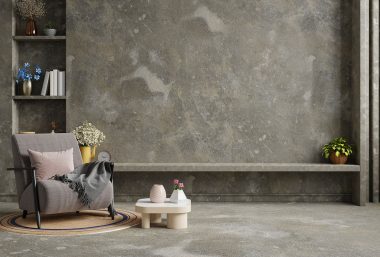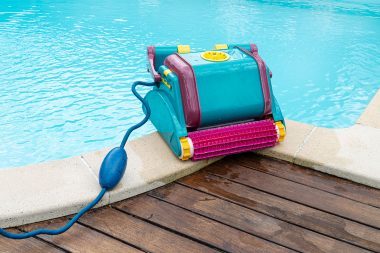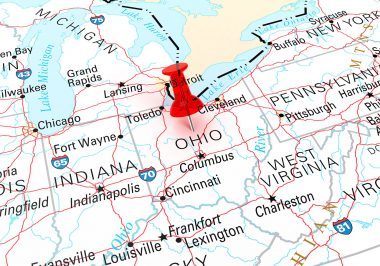Why Is My House So Dusty? Mystery Solved!
Updated Wed, Oct 22, 2025 - 7 min read
Top blog articles
Wondering, “Why is my house so dusty?” You’re not alone. Despite your best cleaning efforts, dust seems to return almost immediately, settling on surfaces and making your home look unpleasant. More concerning, excessive dust can seriously impact your health. According to the American Lung Association, dust can carry many pollutants like dust mites, pet dander, and mold spores that make indoor air unhealthy.
The good news? Once you understand what’s causing all that dust, you can take targeted action to reduce it and breathe easier.
Usually, a dusty house results from inadequate airflow or contaminated air carrying millions of microparticles. These include dead skin cells, hair particles, pet dander, carpet fibers, clothing and upholstery fragments, dust mites, bedding particles, and outdoor pollutants. If cleaning your home yourself isn’t feasible, consider investing in a local housekeeping or maid service to help maintain good air quality.
Although dust is inevitable, you can manage and significantly reduce it. If you’re regularly asking yourself, “Why is my house so dusty?”, this article will provide the answers and solutions you need.
Common Reasons Your House Is So Dusty
Faulty HVAC System
A properly functioning HVAC unit filters outdoor air before heating or cooling your home and distributing it through air ducts. However, a cheap model, dirty filters, or a poorly maintained system won’t effectively keep airborne dust out.
According to the Environmental Protection Agency, contaminated central air handling systems can become breeding grounds for mold, mildew, and other biological contaminants, and then distribute these throughout your home.
A dirty HVAC system not only fails to reduce dust but also increases your energy bills and shortens the appliance’s lifespan. Regular maintenance and protection of your HVAC systems improves indoor air quality significantly.
Read more: HVAC maintenance tips
Dirty Carpets with Dust Mites
Over time, dust and dirt accumulate in the air and settle deep into carpet fibers. Your shoes and pets’ paws bring additional dirt from outside, compounding the problem. The EPA notes that house dust mites (one of the most powerful biological allergens) thrive in damp, warm environments like carpeting.
The only solution is keeping your flooring and carpets clean through regular vacuuming and deep cleaning.
Leaky Doors and Windows
Gaps around doors and windows lead to energy loss and allow dust and pollen to enter your home whenever the wind blows. This situation worsens if you live on a dirt or gravel road.
Consider window and door caulking to improve energy efficiency and seal gaps in the framework, preventing outdoor dust infiltration.
Dust Buildup on Furniture, Blinds, and Curtains
Fabric and upholstered furniture accumulate dust, and every time you draw curtains or sit on the sofa, trapped dirt is released into the air. The best solution is to use a vacuum cleaner to clean curtains, drapes, and furniture weekly.
If you have blinds or shades, wipe them down regularly to prevent dust accumulation.
Holes in the Ducts
Air ducts run through walls, ceilings, attics, and crawl spaces. Sealing issues or holes in ductwork allows dust to enter and be blown throughout your home.
If you notice more dust after running your furnace or air conditioner, the ducts likely aren’t properly sealed. Contact an HVAC expert to run a pressure test on your duct system.
Read more: Attic cleaning cost
How to Get Rid of Excessive Dust in Your House
The EPA identifies dust as containing dangerous tiny particles, including mold spores, pollen, dust mite waste, human and pet hair, skin flakes, bacteria, viruses, and food particles. Reducing dust accumulation is essential for health. Here are proven methods:
Dust Properly
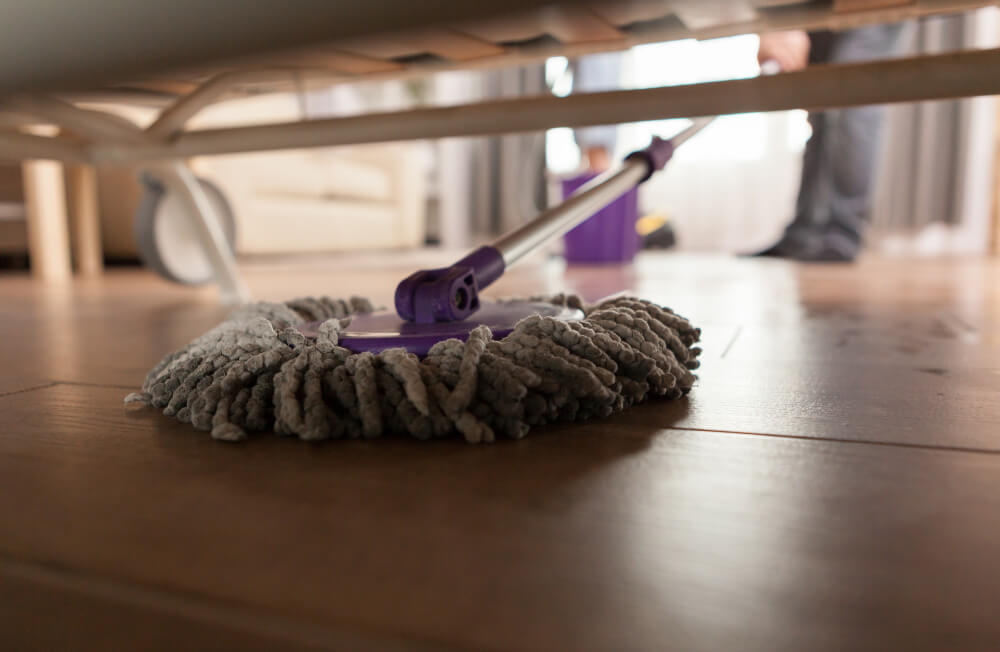
Using a dry cloth simply moves dust around without removing it. Switch to a damp microfiber cloth instead. The American Lung Association recommends using tools that can trap and lock dust to reduce the amount stirred up when cleaning.
The moisture captures dust particles, making trapping and disposal easier. Always dust from top to bottom, wipe fan blades, walls, and baseboards monthly to prevent buildup.
Vacuum Regularly
Make vacuuming carpets, furniture, and curtains part of your regular home maintenance schedule to improve air quality. If you dislike vacuuming, consider complete carpet removal and installing hardwood floors instead.
Remember that leather or wooden furniture collects less dust than fabric alternatives.
Consider Removing Wall-to-Wall Carpeting
While it may seem extreme, if you’re planning a home makeover or remodeling, consider this option. Wall-to-wall carpeting and expansive area rugs harbor dust that’s released into the air with every step.
Hard flooring options like hardwood, tile, or vinyl are easier to maintain and minimize dust accumulation. If removing carpet isn’t possible, use a rattan, wire, or plastic rug beater to remove dust effectively.
Use an HVAC Filter with a Higher MERV Rating
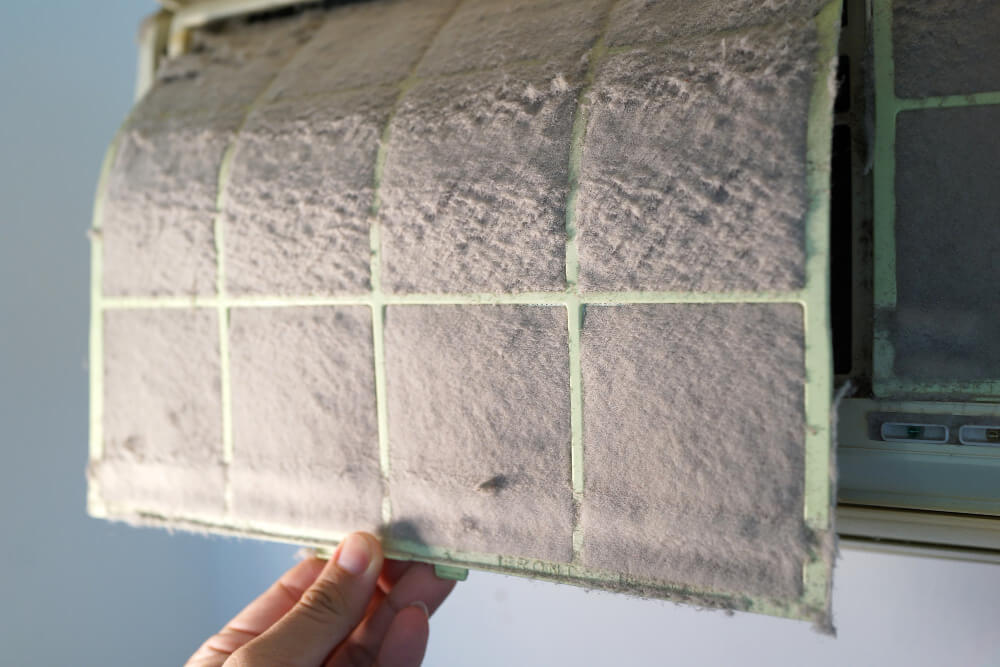
A filter with a higher MERV rating blocks more dust particles from entering your home. The American Lung Association recommends upgrading to MERV 13 or higher filters for optimal particulate matter removal.
Inspect air filters monthly; if you can’t see the filter media, it’s time for a replacement.
Seal the Doors and Windows
Ensure weather stripping around doors and windows is intact. This improves your home’s energy efficiency and prevents dust from entering living areas. On pleasant days, open windows for 15-20 minutes to improve ventilation and indoor air quality.
Avoid Wearing Outdoor Shoes Inside
Your shoes track in most dirt and dust. The best solution is establishing a no-shoes policy: ask everyone to remove shoes at the door and wear house slippers from a shoe rack near the entrance.
Clean Your Indoor Plants Regularly
Houseplants accumulate dust, which poses health risks and hampers their ability to photosynthesize properly. Use a microfiber cloth to remove dust from indoor plants effectively.
Pro tip: Rub a little mayonnaise on leaves for extra shine!
Keep Your Bedding Clean
Wash bedsheets and pillowcases weekly to prevent dust buildup. According to the American Lung Association, people with dust mite allergies should wash bedding in 130°F water and use allergen-proof mattress encasements.
Vacuum your mattress and furnishings regularly. Pillows especially collect dust mites, wash them by hand or use a washing machine with gentle detergent, followed by thorough drying.
Run the Bathroom Exhaust and Air Purifier
Running your exhaust fan after showering and using an air purifier keeps things clean and dry. Air purifiers remove contaminants from indoor air, improving overall quality.
The EPA recommends maintaining indoor humidity around 30-50% to prevent mold growth and dust mite concentration. Excessive moisture promotes these problems, so maintain comfortable humidity levels, ideally around 50%.
Use a Humidifier When Needed
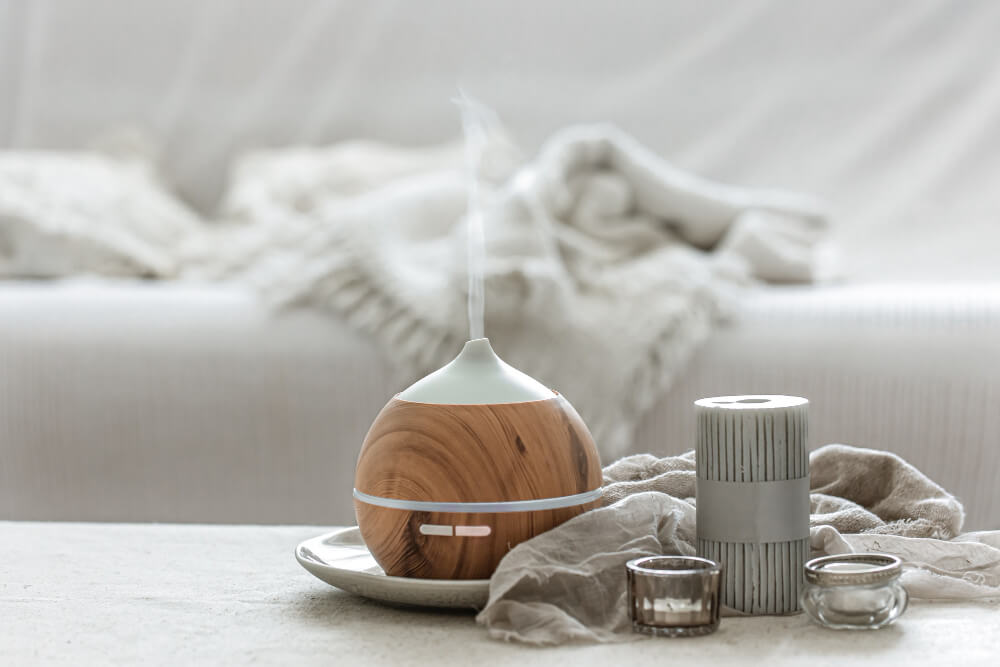
Dry indoor air increases visible dust. Dry air causes skin flaking, and can cause wood furniture and trim to become parched, resulting in cracking and flaking paint.
Use a humidifier or cool mist diffuser to add moisture to your home’s air. This also prevents static electricity buildup.
Maintain Regular Pet Grooming
Dead skin cells and pet hair significantly contribute to dust accumulation. Pets shed substantial amounts of hair that become airborne particulates. Regular grooming prevents buildup of dead skin and hair while benefiting both you and your pets.
Invest in Vacuum Seal Bags
Clothing, bedding, and pillows shed loose cotton and polyester fibers. Vacuum seal bags solve this problem while reducing wardrobe clutter. Store items you don’t regularly use in sealed or garment bags to keep closets organized and save space.
Final Thoughts
Everyone wants a dust-free home. Beyond aesthetics, excessive dust causes severe allergies and breathing problems. Act quickly to reduce dust before experiencing stuffy noses, itchy eyes, continuous sneezing, or worsening asthma.
According to the American Lung Association, indoor air can be 2-5 times, even up to 100 times, more polluted than outdoor air, and Americans spend 90% of their time indoors. Figure out your dust sources and take necessary steps to fix the problem.
Your health depends on it.
Your opinion matters. Leave a comment





